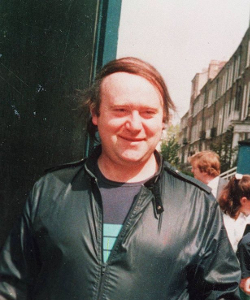 The Cavan Orphanage fire occurs on the night of February 23, 1943 at St. Joseph’s Orphanage in Cavan, County Cavan. Thirty-five children and one adult employee die as a result. Much of the attention after the fire surrounds the role of the Poor Clares, the order of nuns who run the orphanage and the local fire service.
The Cavan Orphanage fire occurs on the night of February 23, 1943 at St. Joseph’s Orphanage in Cavan, County Cavan. Thirty-five children and one adult employee die as a result. Much of the attention after the fire surrounds the role of the Poor Clares, the order of nuns who run the orphanage and the local fire service.
The Poor Clares, an enclosed contemplative order, found a convent in Cavan in 1861 in a large premises on Main Street. In 1868, they open an orphanage. At the time young petty criminals could be educated and learn a trade in a reformatory, however, orphaned and abandoned children are not accorded the same opportunity. The Industrial Schools Act 1868 seeks to address this by the establishment of the Industrial school system. In 1869, a school, attached to the convent, is established and becomes known as the St. Joseph’s Orphanage & Industrial School.
Fire breaks out in the early morning hours of February 23, 1943, in the basement laundry and is not noticed until about 2 AM. The subsequent investigation attributes the fire to a faulty flue. The sight of smoke coming out of the building alerts people on Main Street. They go to the front entrance and attempt to gain entry. Eventually they are let in by one of the girls but, not knowing the layout of the convent, they are unable to find the girls.
By this time all of the girls have been moved into one Dormitory. At this point it would have been possible to evacuate all of the children but instead the nuns persuade the local people to attempt to extinguish the fire. Two men, John Kennedy and John McNally, go down to the laundry to try to put the fire out. The flames are now too intense for this to be possible and McNally only survives by being carried out by Kennedy.
By now it is no longer possible for the girls to get out through the main entrance or the fire escape. The local fire brigade arrives but their equipment is not sufficient for the fire. Wooden ladders are not long enough to reach the dormitory windows. In the absence of any other solution, girls are encouraged to jump. Three do so, though with injuries, however most are too frightened to attempt it. A local electricity worker, Mattie Hand, arrives with a long ladder and a local man, Louis Blessing, brings five girls down. One child leaves by way of the interior staircase while it is still accessible. One child makes it down the exterior fire escape. One child escapes by way of a small ladder held on the roof of the shed. The fire completely engulfs the dormitory and the remaining girls perish.
 Over concerns about the causes of the fire and the standard of care, a Public Inquiry is set up. The report’s findings state that the loss of life occurs due to faulty directions being given, lack of fire-fighting training, and an inadequate rescue and fire-fighting service. It also notes inadequate training of staff in fire safety and evacuation, both at the orphanage and local fire service. This finding has been disputed by many. It is alleged that the nuns prevent firefighters from entering the building for fear that they might see the girls in a state of undress.
Over concerns about the causes of the fire and the standard of care, a Public Inquiry is set up. The report’s findings state that the loss of life occurs due to faulty directions being given, lack of fire-fighting training, and an inadequate rescue and fire-fighting service. It also notes inadequate training of staff in fire safety and evacuation, both at the orphanage and local fire service. This finding has been disputed by many. It is alleged that the nuns prevent firefighters from entering the building for fear that they might see the girls in a state of undress.
Due to the nature of the fire, the remains of the dead girls are placed in eight coffins and buried in Cullies cemetery in Cavan. A memorial plaque is erected in 2010 just inside the convent gates at Main Street, Cavan. The plaque is anonymously donated to the Friends of the Cavan Orphanage Victims group.
(Pictured lower right: The grave containing the remains of the 36 victims)

